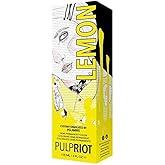Choosing the right food for your dog is crucial for their health, happiness, and longevity. With a plethora of options available in the market, the task can be overwhelming for pet owners. This comprehensive guide will help you navigate the world of dog food, highlighting the best options, ingredients to look for, and factors to consider when selecting the ideal diet for your furry companion.
Understanding Your Dog’s Nutritional Needs

Before diving into specific food options, it’s essential to understand the basic nutritional needs of dogs. A balanced diet typically includes:
- Proteins: Vital for growth, maintenance of body tissues, and overall health.
- Fats: A source of energy and essential fatty acids that support skin and coat health.
- Carbohydrates: Provide energy and aid in digestion.
- Vitamins and Minerals: Crucial for various bodily functions, including immune health and bone strength.
Different dogs have different dietary needs based on their age, size, breed, and health conditions. For example, puppies require more protein and fat for growth, while senior dogs may need fewer calories to avoid obesity.
Types of Dog Food
There are several types of dog food available, each with its advantages and disadvantages:
- Dry Food (Kibble): Convenient and cost-effective, dry food is the most popular choice among dog owners. It’s easy to store and helps keep teeth clean.
- Wet Food (Canned): Generally more palatable and hydrating, wet food can be a good option for picky eaters or dogs with dental issues.
- Raw Diet: Advocates of raw feeding believe it mimics a dog’s ancestral diet. However, this approach requires careful planning to ensure nutritional balance.
- Homemade Dog Food: Cooking for your dog allows for complete control over ingredients, but it can be time-consuming and may lack essential nutrients if not balanced properly.
- Grain-Free Options: Some dogs may have allergies or sensitivities to grains, making grain-free formulas a popular alternative.
Key Ingredients to Look For
When selecting dog food, it’s vital to read the ingredient list. Here are some key ingredients to look for:
- High-Quality Proteins: Look for named meat sources (e.g., chicken, beef, lamb) as the first ingredient.
- Whole Grains: Ingredients like brown rice or oats provide digestible carbohydrates and fiber.
- Fruits and Vegetables: Nutrient-dense options like blueberries, carrots, and spinach can offer vitamins and antioxidants.
- Healthy Fats: Sources like fish oil or flaxseed oil provide omega-3 fatty acids for coat health.
Ingredients to Avoid
Just as important as knowing what to look for is knowing what to avoid. Here are some ingredients that should raise red flags:
- By-products: Meat by-products can be low-quality and less nutritious.
- Artificial Additives: Preservatives, colors, and flavors can be harmful to your dog’s health.
- Fillers: Ingredients like corn and soy provide little nutritional value and may cause allergies in some dogs.
Choosing the Right Food Based on Life Stage

Different life stages require different nutritional approaches:
Puppies
Puppies need a diet rich in protein and fat to support their rapid growth. Look for puppy-specific formulas that are higher in calories and nutrients.
Adult Dogs
Adult dogs typically require a balanced diet with moderate protein and fat levels. The focus should be on maintaining a healthy weight and providing essential nutrients.
Senior Dogs

Senior dogs often benefit from lower calorie options that can help manage weight and joint health. Look for foods with added glucosamine and chondroitin for joint support.
Special Dietary Needs

Some dogs may have specific health concerns that require tailored diets. Consider the following:
- Allergies: Dogs with food allergies may need a limited-ingredient diet or a hypoallergenic formula.
- Weight Management: Weight control diets are available for dogs that need to lose or maintain weight.
- Digestive Issues: Foods with probiotics or easily digestible ingredients can help dogs with sensitive stomachs.
Case Studies: Success Stories of Diet Changes

Many dog owners have experienced positive changes in their pets’ health after switching to a more suitable diet. Here are a couple of examples:
Case Study 1: A Labrador Retriever named Max suffered from obesity and lethargy. After transitioning to a high-protein, low-carb diet, Max lost weight and regained his energy, allowing him to enjoy walks and playtime with his family.
Case Study 2: Bella, a Poodle, had recurring skin issues. After switching to a grain-free formula rich in omega fatty acids, her skin condition improved significantly, and her coat became shinier and healthier.
Consulting with Your Veterinarian

Before making any significant changes to your dog’s diet, it’s always best to consult with your veterinarian. They can provide personalized recommendations based on your dog’s specific health needs, lifestyle, and preferences.
Choosing the best food for your dog is an essential part of responsible pet ownership. By understanding their nutritional needs, considering their life stages, and selecting high-quality ingredients, you can ensure your furry friend leads a healthy and happy life. Always keep in mind the importance of consulting with a veterinarian to tailor a diet that meets your dog’s unique requirements. A well-chosen diet can lead to a longer, healthier, and more active life for your beloved pet.




